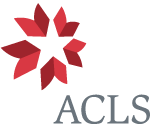Credits
Mapping Occupation depends on the work of a number of individuals and institutions. Gregory P. Downs and Scott Nesbit authored and directed the work on the project.
is an Associate Professor at City College & the Graduate Center of the City University of New York. His book After Appomattox: Military Occupation and the Ends of War will be published in April by Harvard University Press. He is also the author of a prior monograph, Declarations of Dependence: The Long Reconstruction of Popular Politics in the South, 1861-1908, and a book of short stories, Spit Baths.
is an Assistant Professor in the College of Environment and Design and the Franklin College of Arts and Sciences at the University of Georgia, and is a digital humanities fellow at the Willson Center for Humanities and Arts there. He is co-director of Visualizing Emancipation, an online map of the end of slavery in the Civil War South. His work has appeared in the Journal of the Civil War Era, Southern Spaces, and other venues.
The project is hosted by and was developed with the expertise of the Information Technology Outreach Services group at the Carl Vinson Institute of the University of Georgia. Mapping Occupation is built on the ESRI suite of software products, especially ArcGIS online and the StoryMap software.
Annette Griffin, an M.L.A. candidate in the University of Georgia's College of Environment and Design, was the lead designer for the site, giving excellent guidance despite constraints of all kinds on her work. Daniel Sizemore, also an M.L.A. candidate at Georgia, gave early input into the look, feel, and design of the project's exploratory map.
William Hickox, a Ph.D. candidate at the University of Kansas, and Cory Young, a Ph.D. student at Georgetown University, supplied the project with valuable research assistance.
The project is presented with the support of the Willson Center for Humanities and the Arts at the University of Georgia, in affiliation with the Center for Virtual History. It is funded through a Digital Innovation Fellowship from the American Council of Learned Societies.








